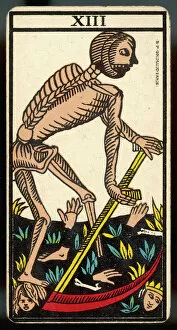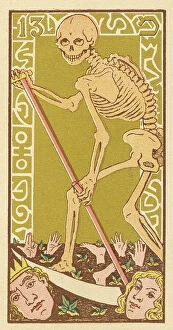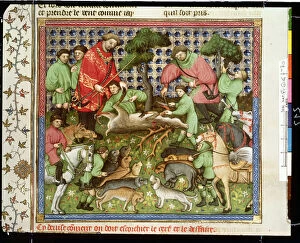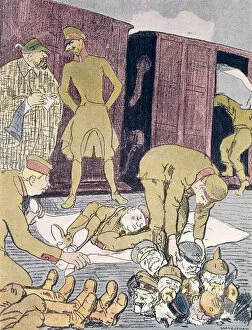Dismemberment Collection
"Dismemberment: Exploring the Dark Side of Transformation and Loss" In the realm of symbolism
All Professionally Made to Order for Quick Shipping
"Dismemberment: Exploring the Dark Side of Transformation and Loss" In the realm of symbolism, death personified on a Tarot card is an intriguing depiction that has captivated minds for centuries. Known as Tarot Card 13 - La Mort (Death), it represents the inevitable cycle of life's end and rebirth. This powerful image serves as a reminder that even in our darkest moments, there is potential for transformation. Delving further into history, we encounter various depictions of dismemberment. A haunting cartoon portrays body parts scattered after the ravages of battle during World War I. The grim reality depicted here reminds us of the horrors faced by those who fought valiantly but paid the ultimate price. Moving back in time to 1792, "Un Petit Souper à la Parisienne" offers a glimpse into post-revolutionary France through a hand-colored etching by Hannah Humphrey. In this scene titled "A Family of Sans-Culottes Refreshing after the Fatigues of the Day, " we witness individuals coming together despite their disheveled state, finding solace amidst chaos. The dismemberment theme extends beyond human experiences; it encompasses geopolitical shifts too. The color lithograph showcasing the Dismemberment of the Ottoman Empire since 1683 highlights how borders have been redrawn throughout history, shaping nations and altering destinies. Exploring different forms reveals diverse perspectives on loss and change. Gaston Phebus de Foix's Livre de la Chasse presents an illustration from Ms Fr 616 fol. 70 depicting cutting up a dead stag—a metaphorical representation reminding us that sometimes breaking things apart can lead to new beginnings. Even fictional narratives embrace this concept; George Studdy's captivating artwork in "One Exciting Night" invites viewers into thrilling tales where unexpected twists may bring about personal transformations or unforeseen consequences. Historical maps provide another lens through which we can understand dismemberment.










